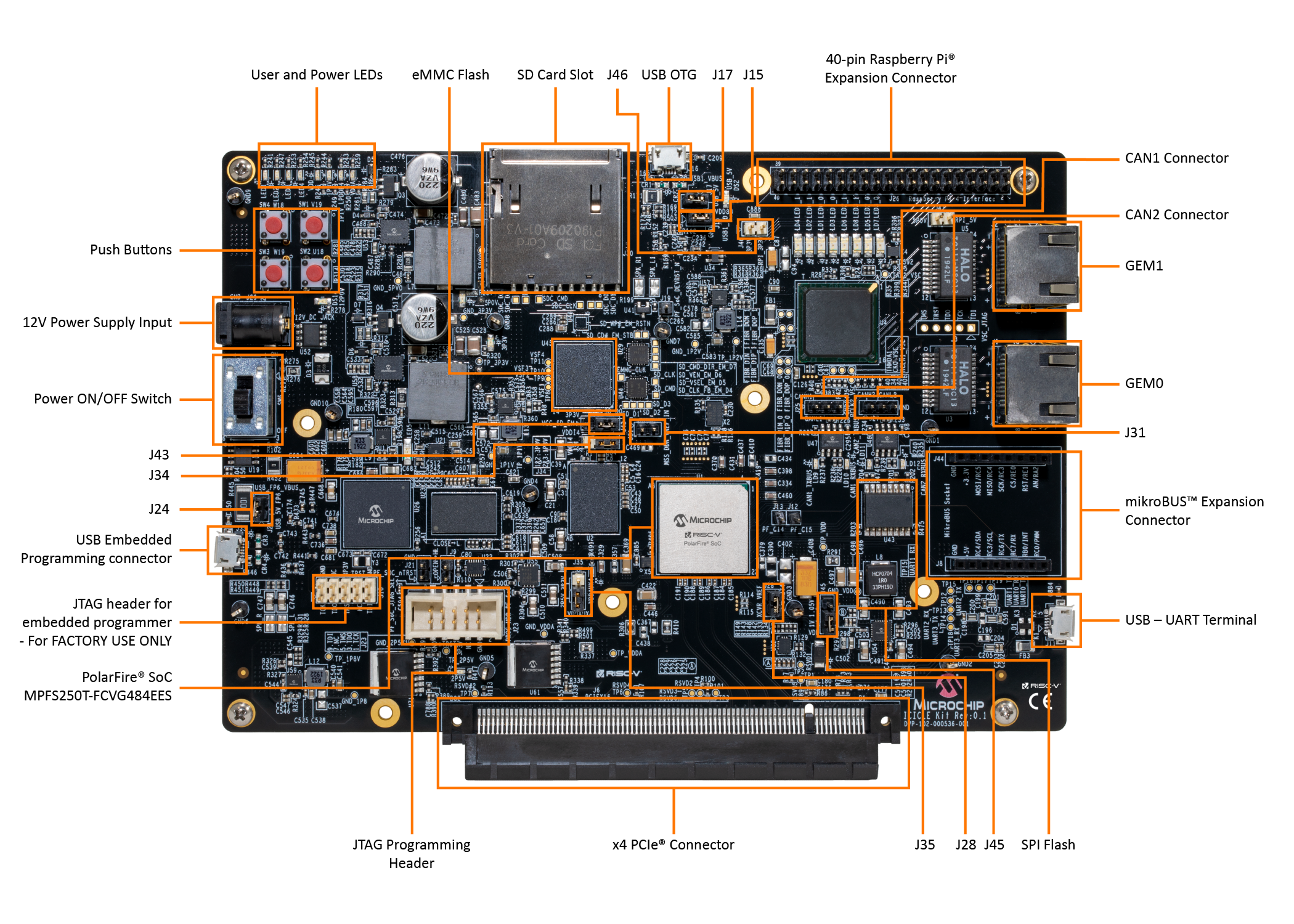We begin our trip with Microchip's PolarFire SoC in this first edition of the series by unpacking the board and running Linux on it.
Microchip's PolarFire SoC Icicle Kit was released in 2020 as a low-cost, open-source means for developers and engineers to experiment with both the PolarFire FPGA family and application-class processor cores based on the RISC-V instruction set architecture.
The PolarFire SoC is a powerful beast, combining Microchip's PolarFire FPGA technology with four 64-bit RISC-V cores from SiFive — plus a fifth "monitor" core that runs the open-source "Hart Software Services" responsible for bringing up the rest of the board — and the Icicle development board aims to make it accessible to all.
We'll be putting the Icicle through its paces in this series, from unpacking to flashing completely new gateware onto the FPGA — all while assuming no prior knowledge with FPGAs or RISC-V. Microchip PolarFire SoC Icicle Kit $499, FPGA: Microchip PolarFire SoC MPFS250T-FCVG484EES, 254k LE, 784 math blocks (1818), CPU: 4 SiFive U54 RV64GC @ 600MHz, 1 E51 RV64IMAC at 600MHz, GPU: None, FPGA: Microchip PolarFire SoC MPFS250T-FCVG484EES, 254k LE, 784 math blocks (1818), CPU
SD card, 2GB LPDDR4 RAM, 128MB SPI flash, 8GB eMMC 2 Gigabit Ethernet is used for networking. 2x RJ45, Raspberry Pi-compatible GPIO header, microBUS, PCI Express Gen. 2 x4, micro-USB 2.0 On-The-Go (OTG), micro-USB 2.0 with 4 UART, micro-USB 2.0 with FlashPro 6 or JTAG, 2 CAN, 2 SPI, 2 I2C, 4 12.7Gbps SERDES, 52 test points.
In 2019, Microchip announced the PolarFire SoC, a system-on-chip that combines fixed-purpose RISC-V processor cores with the company's low-power PolarFire FPGA technology, with an early-access programme starting in December of that year. The business didn't start taking orders for a PolarFire SoC-based development board until July of the following year: the Icicle, which began delivering to consumers in September 2020 after a successful Crowd Supply financing effort.
The PolarFire FPGA is marketed as having great performance at a low power drain – roughly half that of its competitors, according to Microchip. The RISC-V cores from SiFive are included in the PolarFire SoC variation, making it an all-in-one device that can be customised with your own gateware as needed — but we're getting ahead of ourselves.
It's time to wrap up the first part of this series now that the board has been unboxed, updated, and is delivering web pages. Next month, we'll take a look at the software side of things, installing the Libero SoC IDE and looking at the teaching materials Microchip has put up for new users.
The Microchip website has further information on the PolarFire SoC Icicle Kit.





















0 Comments